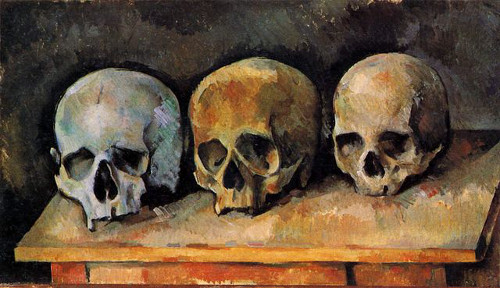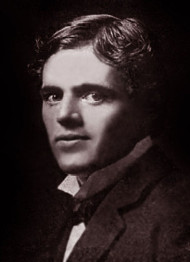“I have seen a thousand graves opened, and always perceived that whatever was gone, the teeth and the hair remained of those who had died with them. Is this not odd? They go the very first things in youth and yet last the longest in the dust.” — Lord Byron, letter to John Murray, Nov. 18, 1820
In a Word
ditation
n. enrichment
improficuous
adj. unprofitable
Another puzzle by Yakov Perelman:
“Two fathers gave their two sons some money. One gave his son 150 rubles and the other 100 rubles. When the two sons counted their finances, they found that together they had become richer by only 150 rubles. What is the explanation?”
Eavesdropping

“It is highly desirable for the spectators at a baseball game to hear what is transpiring on the playing field,” observed inventor James Sellers in 1959, “such as arguments at the bases between opposing players, and discussions between the umpires and players.”
Accordingly he patented an “apparatus for transmitting sound from a baseball field.” Each base is fitted with a hidden microphone, which sends its signal to the announcers’ PA system.
“The sounds on the playing field can thus be transmitted through the control booth to the public address system so that spectators in the grandstand may hear what is taking place on the playing field.”
“By transmitting the sounds from the playing field to the grandstand, the spectators feel that they are taking part in the game. Also, it enables the spectators to judge a play better as they can hear the baseball strike the glove or mitt of a player.”
Brotherly Harmony
In the backing vocals on “Paperback Writer” (1:02 above), John and George are singing “Frère Jacques.”
Podcast Episode 72: The Strange Misadventures of Famous Corpses

What do René Descartes, Joseph Haydn, and Oliver Cromwell have in common? All three lost their heads after death. In this week’s episode of the Futility Closet podcast, we’ll run down a list of notable corpses whose parts have gone wandering.
We’ll also hear readers chime in on John Lennon, knitting, diaries and Hitchcock, and puzzle over why a pilot would choose to land in a field of grazing livestock.
Surf’s Up

Painted on the east side of the Lani Nalu Plaza building in Honolulu, trompe-l’oeil artist John Pugh’s mural Mana Nalu (Power of the Wave) depicts Liliuokalani, the last monarch of the Hawaiian Islands, and surfing pioneer Duke Kahanamoku.
Pugh took a year and a half to create the image, working with 14 other artists. The whole scene is painted, including the wave, the skylight, the balcony, the urns, the children, and the staircase.
“After the mural was near completion,” Pugh writes, “a fire truck with crew stopped in the middle of traffic and jumped out to rescue the children in the mural. They got about 15 feet away and then doubled over laughing that they were fooled into an emergency response mode. I don’t think that there were any liability issues for a false report.”
More of Pugh’s work here and on his website.
(Thanks, Ron.)
Seeing and Believing

“Experience never misleads; what you are misled by is only your judgment, and this misleads you by anticipating results from experience of a kind that is not produced by your experiments.” — Leonardo
Sallie

The 11th Pennsylania infantry regiment was beginning its training at the fairground in West Chester, Pa., in 1861 when a local resident presented a wicker basket to one of the officers. In the basket was a 4-week-old black female terrier puppy. The dog, quickly named Sallie after a local beauty whom the soldiers admired, made hundreds of friends among the men and was adopted as the regiment’s official mascot.
“Sallie knew the drumroll announcing reveille,” writes James Robertson in The Untold Civil War. “She was first out of quarters to attend roll call. During drills, she latched on to a particular soldier and pranced alongside him throughout the exercise. At dress parade, the dog marched proudly beside the regimental colors. At encampments, she slept by the captain’s tent after strolling leisurely through the grounds on her own kind of inspection.”
She accompanied the regiment into battle at Cedar Mountain, Antietam, Fredericksburg, and Chancellorsville, standing stoutly on the front lines and barking ferociously at the enemy. In 1863 Abraham Lincoln tipped his hat to her as he reviewed the Army of the Potomac. On the first day’s fighting at Gettysburg, the regiment was driven back a mile from its original position and she was feared lost; she was discovered three days later standing guard over the wounded and the dead.
She survived, in fact, nearly to the end of the war. On Feb. 5, 1865, at the Battle of Hatcher’s Run during the Siege of Petersburg, men in the second wave of a Union attack found her dead on the battlefield, shot through the head. She had died instantly.
In 1890, the surviving veterans of the 11th Pennsylvania erected a monument at Gettysburg. From a distance it looks like other regimental memorials, a defiant soldier atop a marble pedestal. But on a ledge near the base of the monument lies a small bronze dog.
Working Late

Jack London died in 1916, but he turned up, gamely, in 1920 when psychic Margaret More Oliver tried to reach him through automatic writing. “I am at last attuned to life,” he wrote. “There is no discord — no conflict — the clash of mind and will with heart and impulse of soul has ended.”
She proposed that he write a story through her, and after many false starts they succeeded. “I am getting it over!” he wrote. “I am jubilant! Oh, God! it’s good to be able to do it. My pen is coming back to earth and I shall do wonders yet.”
She sent the manuscript to London’s widow, Charmian, proposing to publish it as “Death’s Sting, by Jack London, Deceased.” But Charmian refused: “If I allowed a book to come out under such ‘authorship,’ immediately every faker in the land — and they are legion — would have perfect right to do the same … the selling value of bona fide work of Jack London’s would be more or less injured, and too much depends on this.”
Oliver pressed her, but Charmian was adamant: “If I should ever be convinced, beyond the flutter of a doubt, I’d eat cyanide of potassium so quickly that I’d be on the Other Side, groping around for Jack, before I had time to think about it!”
The text of Death’s Sting seems to have been lost, but evidently it wasn’t very good — Charmian’s aunt, Netta Payne, wrote, “It has no touch of literary merit, no hint of power or idealistic beauty. It is a tedious detail of sordid facts without the least alleviation of literary artistry.” London’s spirit finally agreed: “I tried to speak with my old tongue, but my old tongue is silenced.”
One person who wasn’t surprised at any of this was Arthur Conan Doyle, who had written to Charmian a year after London’s death to suggest that “a strong soul dying prematurely with many earth interests in its thoughts, would be very likely to come back.”
“Mrs. London received my intrusion with courtesy,” Doyle wrote, “but I am not aware that any practical steps were taken toward this end. They seem now to have come from the other side.”
(Edward Biron Payne, The Soul of Jack London, 1927.)
Unquote

“Books are fatal: they are the curse of the human race. Nine-tenths of existing books are nonsense, and the clever books are the refutation of that nonsense. The greatest misfortune that ever befell man was the invention of printing.” — Benjamin Disraeli
“The multitude of books is making us ignorant.” — Voltaire
“We live in an age that reads too much to be wise.” — Oscar Wilde
“The multitude of books is a great evil. There is no measure or limit to this fever of writing; everyone must be an author, some for some kind of vanity to acquire celebrity and raise a name, others for the sake of lucre or gain.” — Martin Luther
“There are times when I think that the reading I have done in the past has had no effect except to cloud my mind and make me indecisive.” — Robertson Davies
“The road to ignorance is paved with good editions.” — Bernard Shaw
